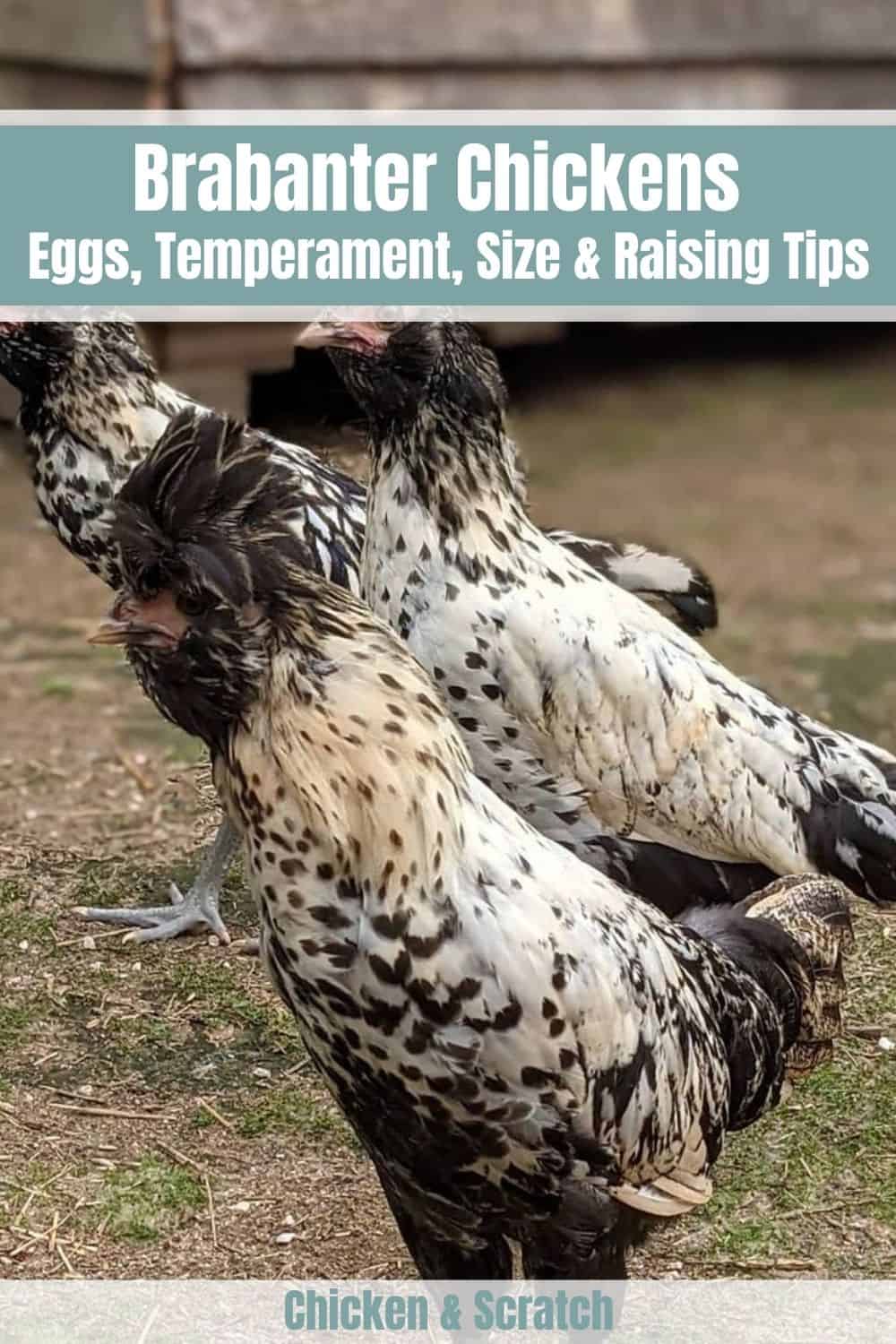Wherever you are in the world, the odds of you seeing different types of chickens are very high. With so many chicken breeds existing in the world, they are certainly everywhere. And because of that, there might have been a couple of species out there that might have caught your fancy.
One of those that might have gotten your attention is the Brabanter Chicken. If you are new to them and you are interested in raising one, then you need to learn some things about them. The more you know about them, the easier it will be for you to add them to your growing flock.
Where Did Brabanter Chickens Come From
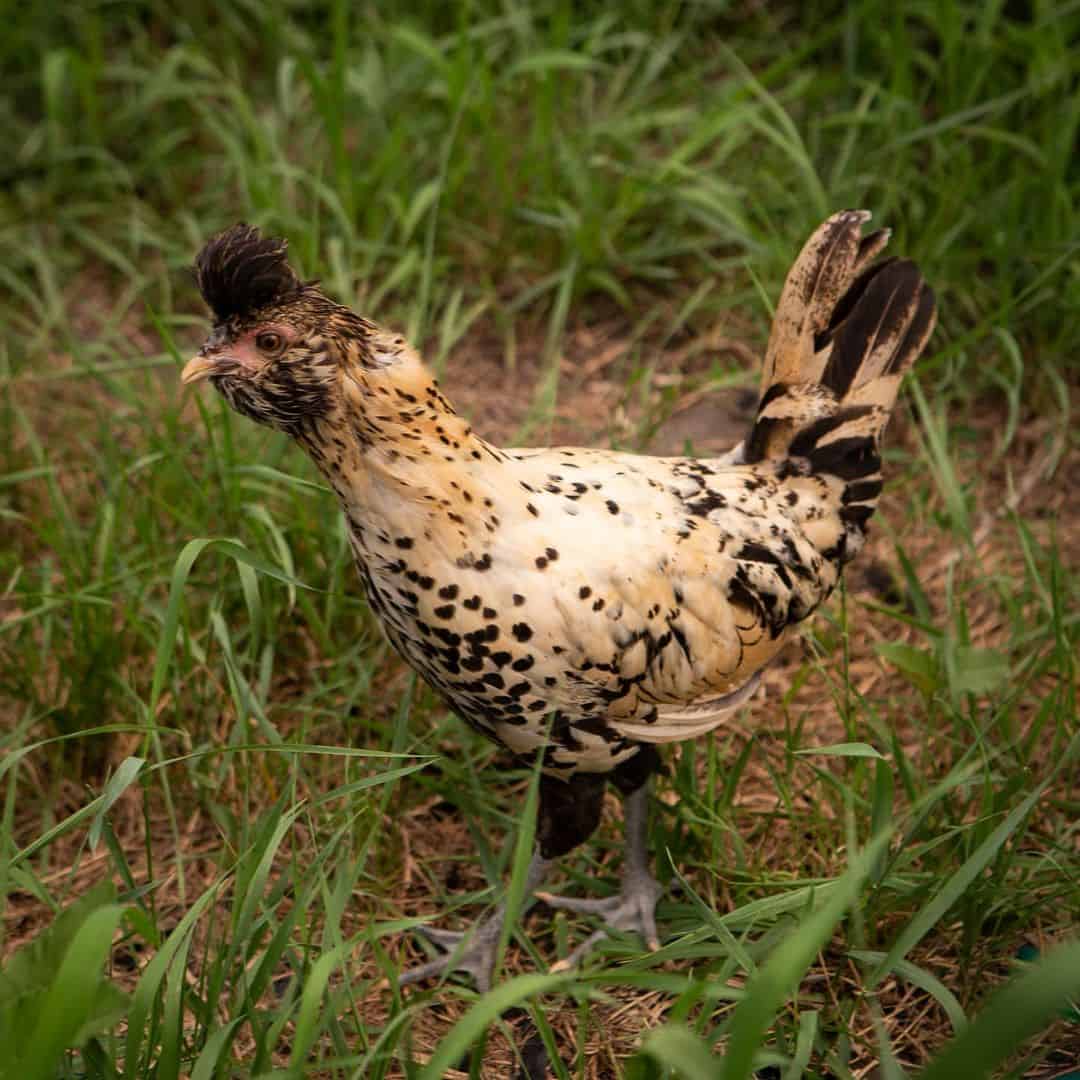
If you are looking into different breeds of chickens, you will discover that each of them has very interesting origins. And it’s no different with the Brabanter Chicken. This particular breed also has a fascinating background that you might find noteworthy.
Are They Dutch?
The origin of the Brabanter Chickens can be traced back to the Southern Dutch province called North Brabant. This region borders some parts of Belgium and it is home to cities like Eindhoven and Breda.
Considered an ancient breed, one of the earliest depictions of the Brabanter Chicken can be found by Dutch painter Melchior de Hondecoeter in the 17th century. The artist was known for his paintings featuring birds, including chickens.
Despite its ancient origins, the Brabanter Chicken went through a rather challenging period. When other breeds of chickens were introduced and imported into Western Europe, the popularity of Brabanter Chickens faded.
By the early 20th century, this breed of chicken was on the brink of extinction. At that time, it was not looking good for Brabanter Chickens. They had to do something to spare their species from disappearing.
To save this breed, breeders had to figure out a way to stop them from being eradicated. For its revival, breeders started cross-breeding Brabanter Chickens with other crested and bearded varieties.
Through this, breeders were able to revive this variety of chicken. If they didn’t resort to cross-breeding, perhaps the world would have witnessed the extinction of this particular breed forever.
With its resurgence, Brabanter Chickens were once again thriving, though they were still deemed as rare. If you compare the number of Brabanter Chickens in the world today, it’s still pretty low compared to other breeds around. This even includes the country of its origin – The Netherland
How Do They Look?
If you aren’t too familiar with Brabanter Chickens, there are a couple of features that are unique to them. Once you figure out what those are, it would be so much easier for you to identify if what you are seeing is a Brabanter Chicken.
Apart from being considered rare, Brabanters are also known to be unique. There is a majestic and glorious air around them, especially if you are seeing them for the first time.
Check Their Sizes
The Brabanter Chickens we know today are said to be much smaller than their ancestors. As mentioned, this breed was on the brink of extinction. With the cross-breeding measures in place, they were revived. They continue to thrive, despite their rarity.
The standard male Brabanter Chickens weigh about 7.5 lbs. The standard female, on the other hand, weighs between 5.5 – 6 Ibs. There is also a bantam variety that was created around the 1930s. The male and female weighed around 30 oz. and 26 oz respectively.
Look At Their Color and Appearance
As rare as they are, what Brabanter Chicken offers is variety. They come with different patterns and feather colors such as the following:
- Blue
- White
- Black
- Silver
- Gold

While it might not be as common as the ones mentioned above, Brabanter Chickens can also come in colors and patterns such as:
- Buff
- Buff with White and LCreamavender
- Chamois
- Chamois Spangled
- Golden Blue Spangled
- Mahogany
One of the most distinctive features of a Brabanter Chicken is its comb. Compared to other breeds, the comb of the Brabanter is V-shaped. With its unique shape, it doesn’t block their vision whatsoever.
Down the center of its head, you can see a bunch of feathers. You can also see two red horns at the back of their beak and in front of their comb. They also usually have small combs and wattles, although some don’t even have the latter at all.
What’s Behind The Brabanters?

Chickens do not only vary in appearance. Each species has its personality and temperament. These are vital factors to look at, especially if you plan on taking on certain breeds like the Brabanter.
Brabanter Chickens are usually seen as ornamental. However, they can also be dual-purpose as well. They aren’t just there for beauty or for display purposes only but they can still lay a good number of eggs per year. So if you happen to own one or more, then that’s a win-win for you!
The Brabanters are known to be intelligent, sweet, and friendly. They are also calm and docile. They aren’t afraid to be around people, allowing their owners to pet them and goof around with them. Apart from their very unique looks, Brabanter chickens have great moods, endearing themselves to keepers and other people.
Brabanter Chickens can be quite noisy, but they make up for their talkativeness by their fun and inquisitive nature. While they are congenial, they know when and how to defend themselves against threats and predators.
Forage or Confine
When it comes to caring for Brabanter Chickens, you can either leave them out in the open or confine them in a coop. Just like other chicken breeds, Brabanters can actually forage on their own. As a matter of fact, they are good at it!
If they have enough space to go around, they can forage and find food for themselves. Given their ability to find sustenance on their own, do take note that might not be enough to sustain their daily nutritional needs so you still need to make sure you feed them well.
Brabanter Chickens are also fine with confinement. However, since they love to climb and fly around, you might want to check if your coop or run has some proper netting.
Do They Lay Eggs?
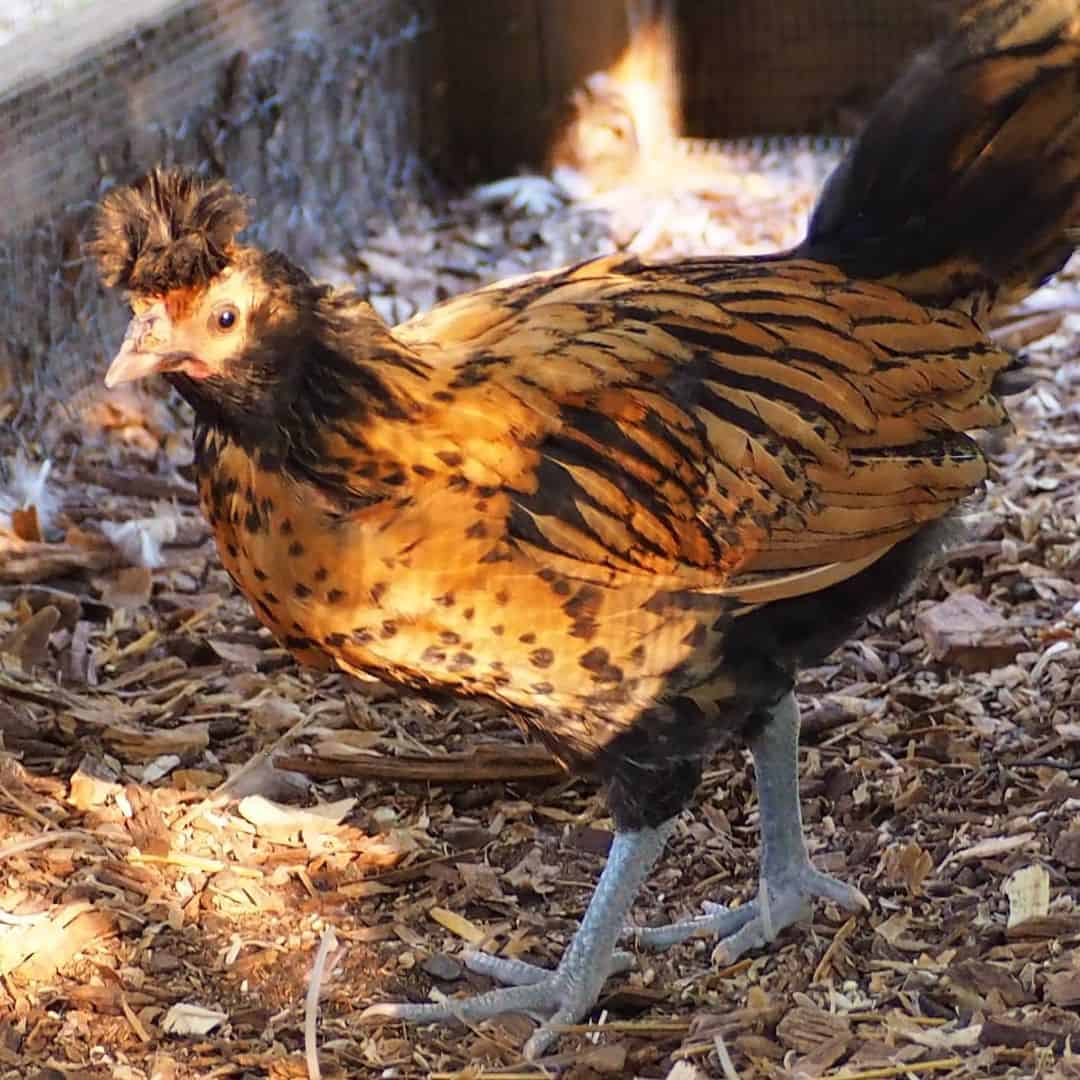
Just like other female chickens, the Brabanter hens can lay eggs too! And while some say they only lay eggs in the spring and summer, it seems some Brabanter chickens also do so in the wintertime!
Brabanter chickens start laying eggs at six months. They can lay about 3 to 4 eggs per week, making it about 150 to 200 eggs per year. The eggs they lay are large and white. The number of eggs Brabanter hens can lay in a year is not too far from the average number produced by poultry hens in Australia.
One of the traits that female Brabanter chickens have is that they aren’t as broody as others. While they might have the urge to sit on the eggs they have laid and hatch them, they don’t brood as often as other hens.
If you wish your Brabanter chickens to lay healthy chicks, then you need to make sure their parents are as well. As soon as Brabanter chicken eggs are laid, you can actually see some of its distinct characteristics already.
When the chicks dry, one of the very first things that you would notice is their beards. You would see the differences in sizes among the chicks. As the chicks grow, so do their beards, albeit slowly but surely.
As for their crests, they aren’t as visible as soon as the chicks are born. It would probably take a fortnight before it becomes visible. When their crests do appear, it’s easy to tell the differences. All the other physical attributes that make the Brabanter chickens unique start showing up a few more weeks after the chicks are born.
Do They Have Health Issues?
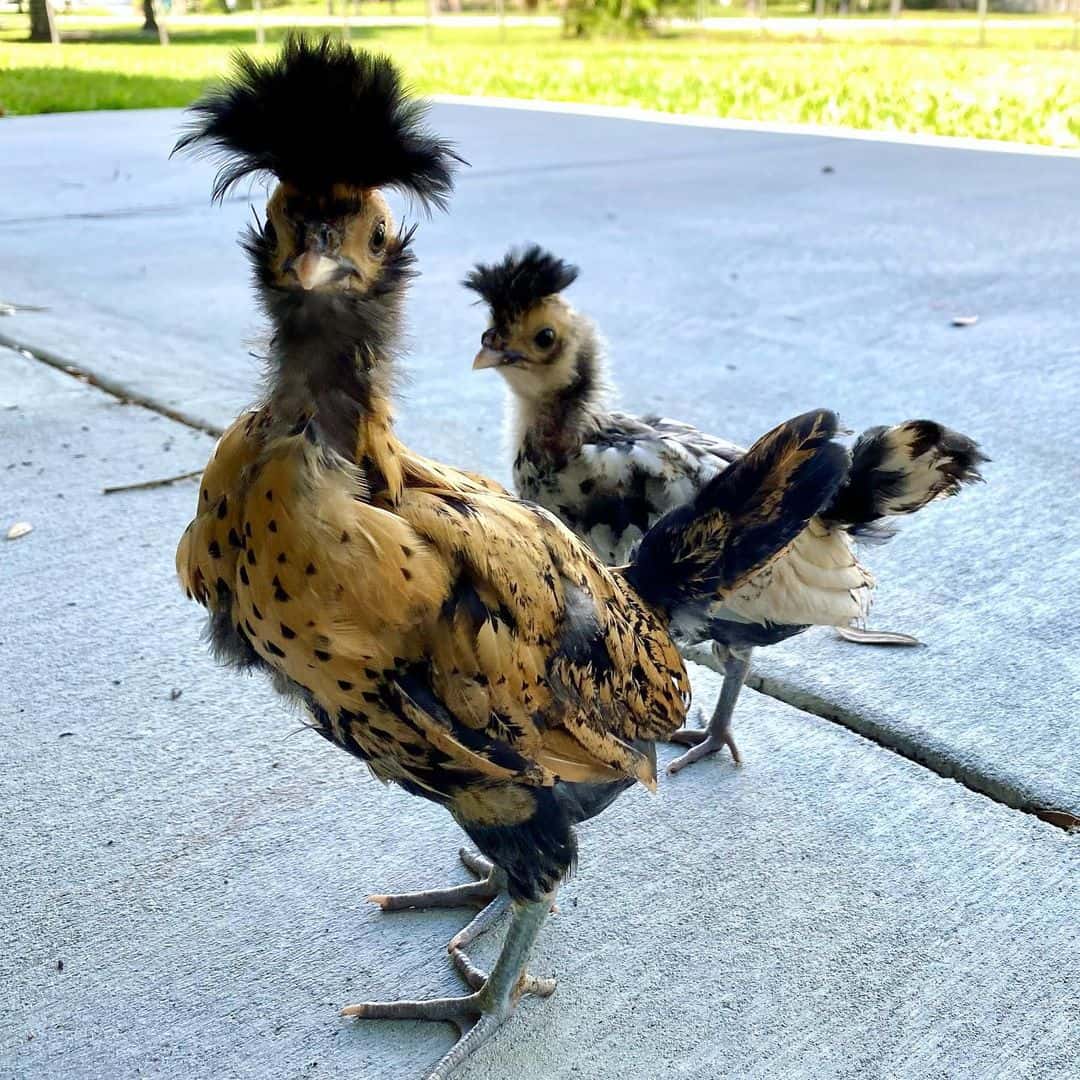
Brabanter chickens are known to be healthy. However, there might be some circumstances that would affect them from living their best lives. Chickens generally live for about 7 to 8 years, and if Brabanters do not encounter any health issues, they can do so as well.
With their unique crests and beards, you might want to check on your Brabanter chickens from time to time. One of the things that you need to watch out for is chicken mites. These tiny creatures might find their way into your Brabanters’ beards or crests and make homes out of them.
When they do, they might harm your fowls. They can bite and draw blood from the chickens, causing them discomfort. In some cases, it might be too much for your Brabanter chickens and affect their overall health.
The Brabanters chickens are prone to weight gain. When this occurs, there will be excess fat in the liver and abdomen. When there are excess fat deposits in the chicken’s body, they can damage the liver.
The seasons can also affect your Brabanters’ health. While they are cold-hardy chickens, often surviving extreme temperatures, they shouldn’t be left all alone. The Brabanters can fight off frostbite due to their smaller wattles and combs, but they still need some heat during the coldest days.
In case of extreme heat, they can also withstand this too. However, too much heat can cause stress and dehydration. This can affect their growth and egg production.
Due to their less aggressive nature, Brabanters might be easy targets for other chicken breeds in the coop. If this is the case and the other chickens try to get aggressive with them, they might end up hurt or injured. It’s better to move them to a different coop or let them be by themselves.
Three Tips for Raising Brabanter Chicken

Brabanter Chickens have a rare status. Due to its rarity, those who plan on raising and keeping them should take extra precautions. Whether you plan on displaying them at exhibitions, keeping them as pets, or adding them to your growing flock, here are three tips that you should remember:
1. Feed them well
A well-balanced diet that has all the right nutritional needs is what healthy Brabanter chickens should have. Whether they are male or female, bantam or otherwise, they need the right amount of nutrition.
If your Brabanter hens start laying eggs, they need to be 100% well. It would allow them to produce healthy eggs. If you want to ensure that they are healthy and well, there should be the right amount of calcium, protein, and everything else in between.
2. Let Them Forage
Brabanter chickens are great at foraging. Since they love doing this, let them roam around if you have the space. They would surely love this. When you let them be, it can be a good form of exercise for them. Instead of just letting them sit inside the coop all day long, they can do what they like to do and get a workout in the process. This can greatly benefit them both in the long run!
3. Keep Them Safe At Night
While Brabanter chickens can activate their defense mechanisms when a predator is around, it is still important that they are kept safe at night. During the day, you can let them loose in an open area and they can forage and run around.
However at night, they should be in a coop that has undergone predator proofing. Your Brabanter chickens can sleep well, knowing that they are protected from those who might harm them. As Brabanters are a bit sparse, you want to secure them in the best possible way.
Take Care Of A Brabanter now!
While there are numerous chicken breeds in the world, there are some exceptional varieties out there that might truly catch your eye. This is particularly true for those who have opted to adopt Brabanter chickens into their flock.
Regardless of what you plan to do with them, Brabanters are a great addition to your coop. With their sweet and endearing nature, coupled with their beauty, they make great pets and show chickens. They can even produce a good number of eggs, contributing to your small poultry in the process. For such a rare breed, they offer so much.
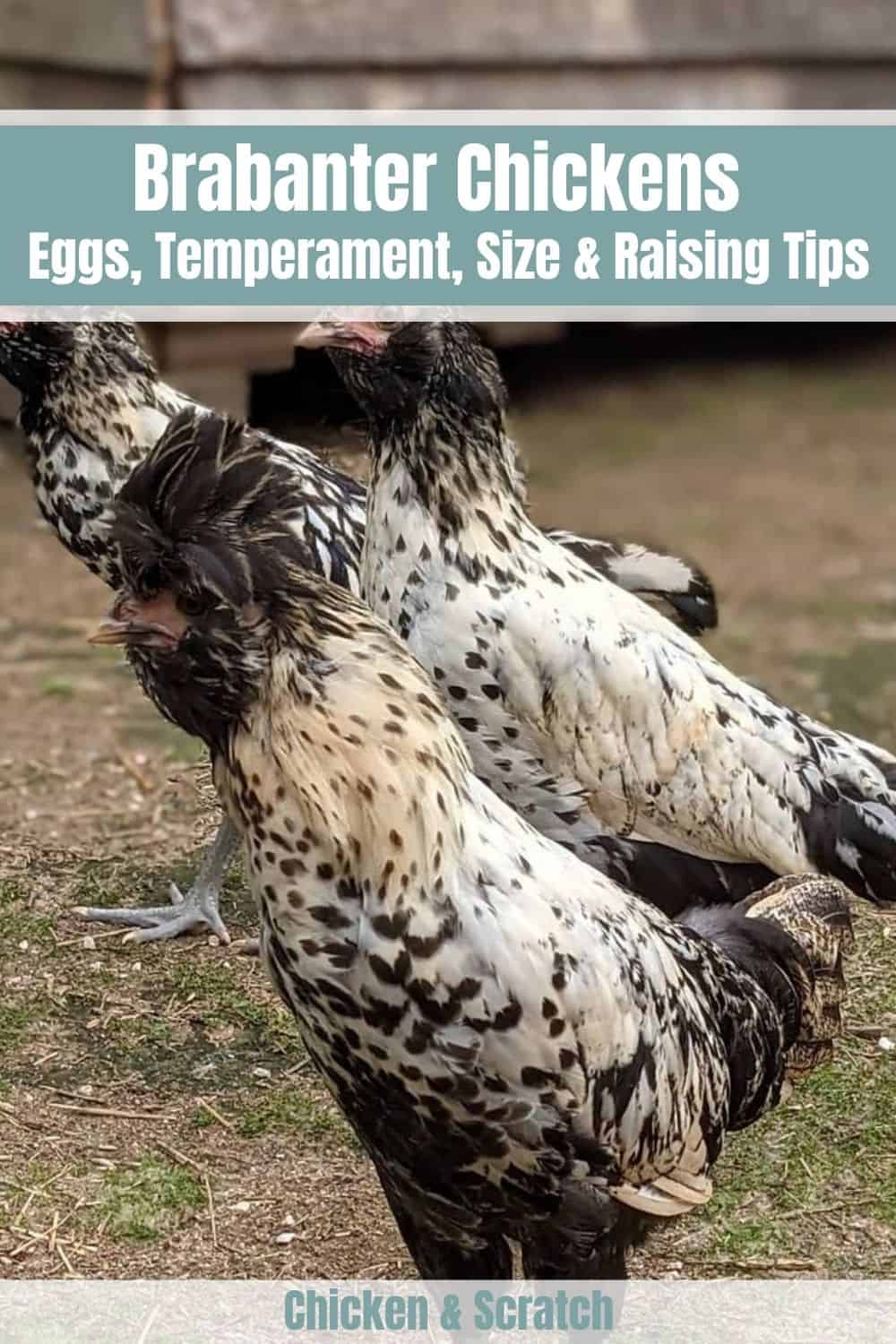

Joseph Hudson has been raising chickens for over 15 years. In 2018, he completed the Agriculture & Natural Resources program at Mt. San Antonio College. He currently raises over 1400 chickens on his 7.5-hectare farm. He keeps sharing his experience on raising healthy and happy chickens on Chicken Scratch The Foundry.
